Specific medical and dental procedures require the patient to give informed consent before the process can be done. One such treatment is Invisalign and is done by an orthodontist. An Invisalign Informed Consent Form will be used in this situation.
What is Invisalign?
This is an orthodontic device, much like braces that help align the teeth. Rather than visible metal, it is made of a transparent or clear material that is less noticeable.
What is Informed Consent in Dentistry?
Informed consent is a legal requirement that allows the dentist/orthodontist to touch the patient, and respects the rights of a patient to determine for themselves whether they want treatment.
The purpose is:
- To show the patient voluntarily consented to treatment
- That all necessary information about the procedure has been given to the patient
- That they have been given ample time to think about the process before deciding
- To go over the benefits and risks of the proposed treatment, as well as any alternative treatments
- Go over costs
What is Invisalign Informed Consent Form?
It is a form that a patient will need to sign to authorize an orthodontist to use the Invisalign treatment to align teeth. It’s considered cosmetic surgery, and the document itself informs the patient about possible risks, any inconveniences, and their responsibilities for things like payment and aftercare. Once signed, the patient assumes responsibility for having the treatment, and both Invisalign and the practitioner are protected from liability.
Free Templates and Examples
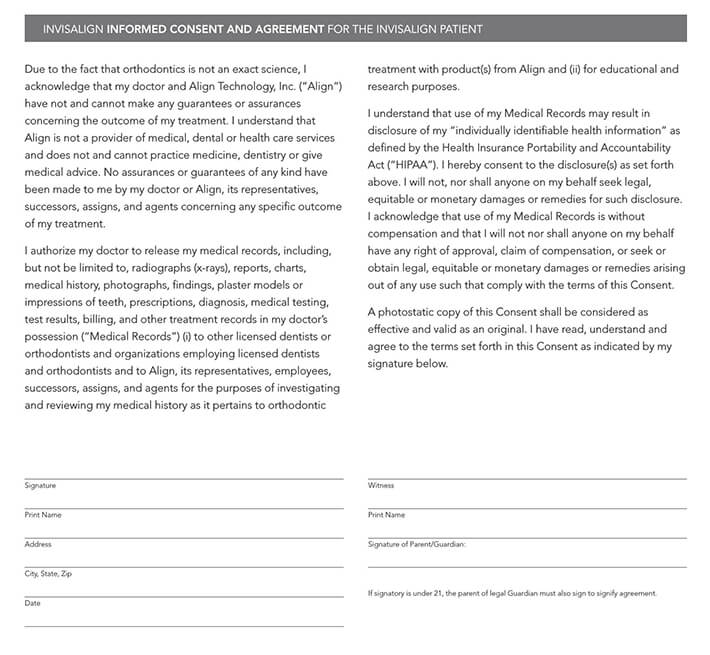
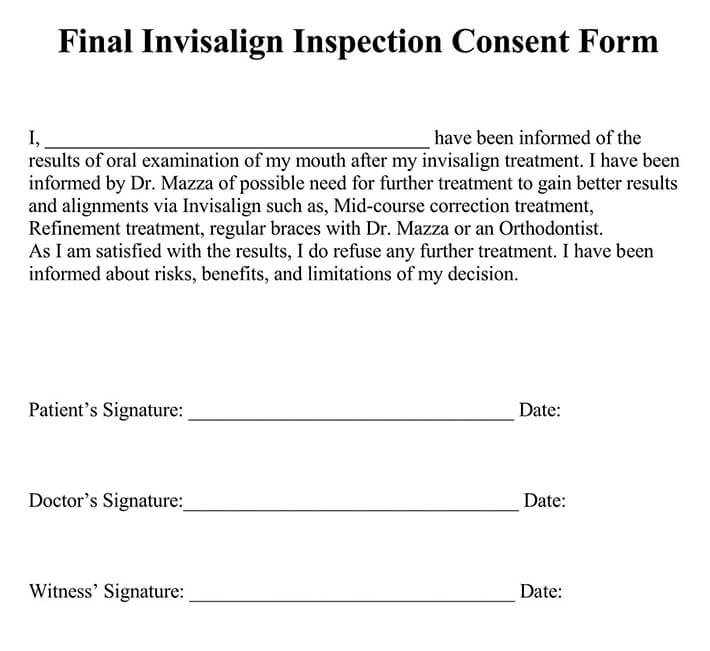
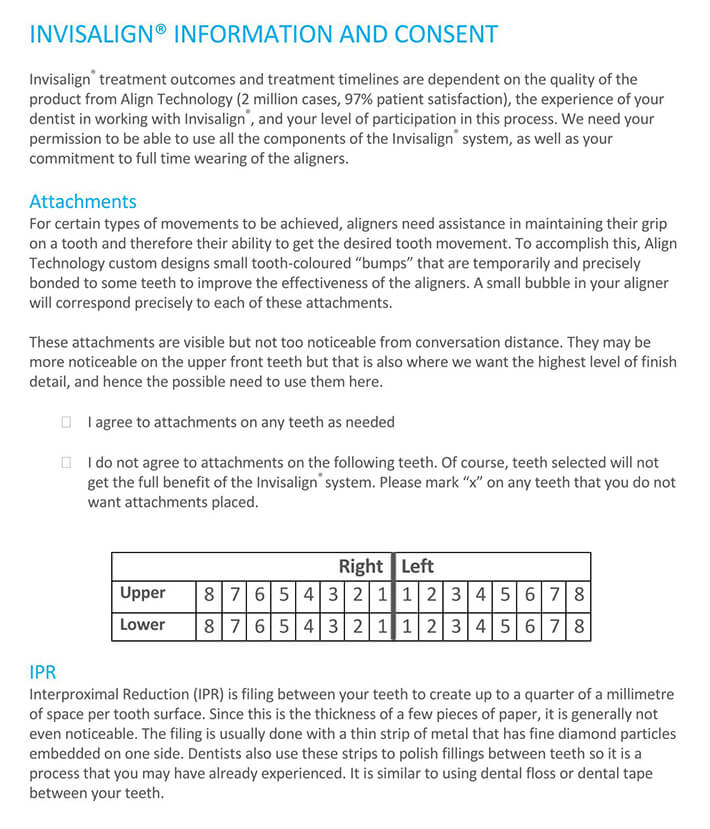
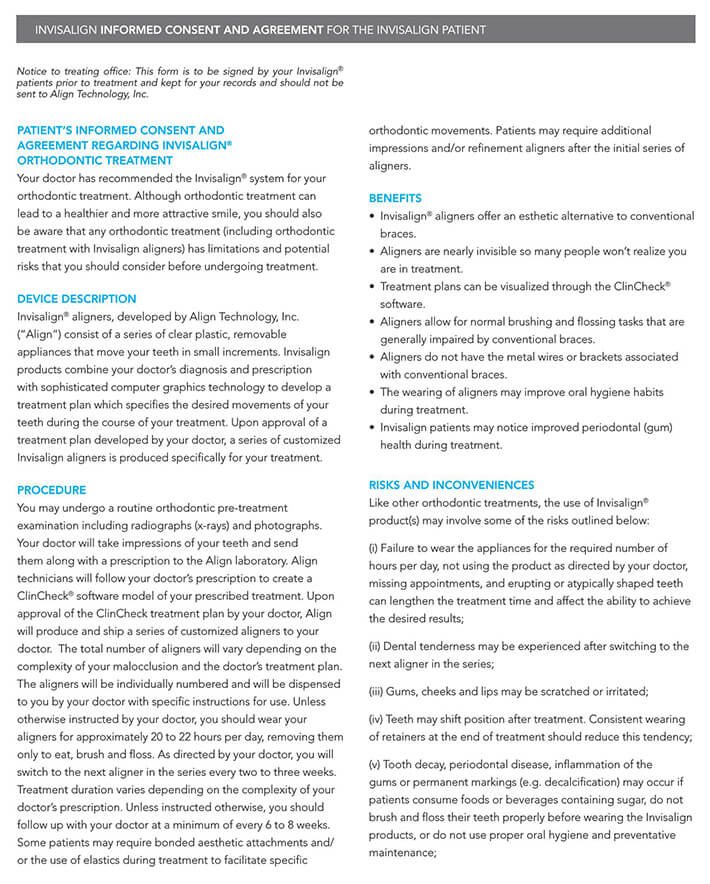
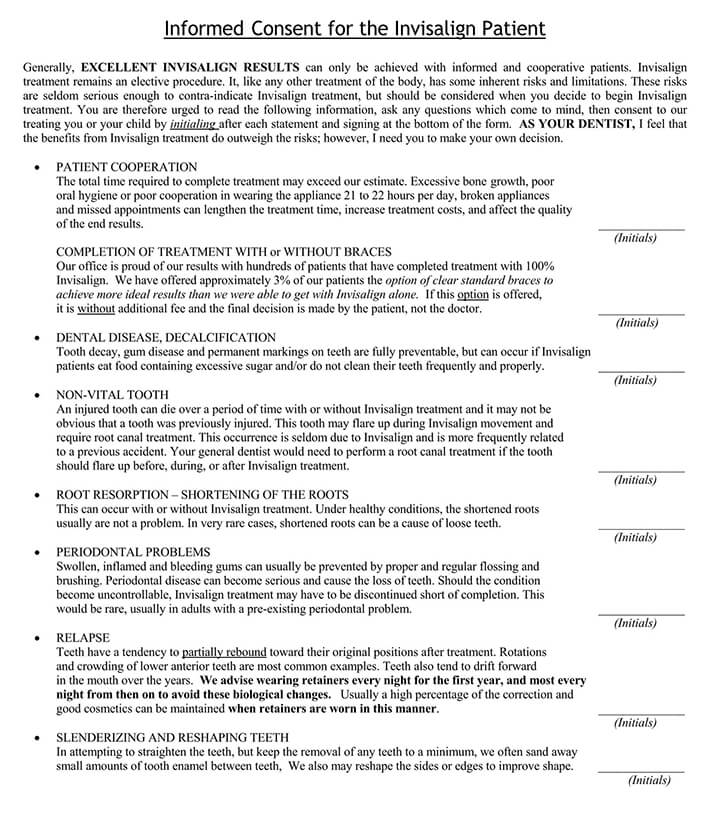
How to Use Consent Form
When completing an Invisalign consent form, a witness will need to be present, usually a nurse of the practice. If the procedure is for a minor, the parent or legal guardian of the minor will need to give consent. The form should be used to go over any details about the procedure and should allow the patient to read through and ask any questions before signing it. The way will also have a dental chart that indicated where the Invisalign device would be attached, and the patient must agree to that. They must decide to wear the Invisalign device for the time suggested by the practitioner as well.
Specific Details that Need to be on the Form
There are specific things that you need to be sure are on the form for it to be efficient and to protect the practitioner from liability.
Be thorough
Some orthodontic procedures can be a danger, more so if the patient has not been made aware of how the process itself is done and the aftercare methods they need to follow. Make sure to be as thorough and specific as possible.
Notes and instructions
There should be instructions that will guide the patient through the entire treatment procedure. If the form is going to be done online, clear guidelines regarding how to fill it out need to be given, along with the consent process. There should also be clear contact information of the orthodontic clinic should a patient have questions.
Frequently Asked Questions
Yes. It is a legal requirement, as well as a moral principle that a patient’s right to make decisions about their treatment is respected. It is also essential that the patient be well informed before they make their decision.
No. The patient has a right to withdraw their consent, stop treatments, or refuse treatment at any time. The practitioner should go over any consequences of not continuing their treatment and be made aware that they are responsible if future issues arise as a result of them stopping their medication. This should be recorded in their records.
No. The signature does verify that consent was given. However, valid informed consent requires that the practitioner explain all details, options, and costs associated with the treatment. Documenting what you have gone over with the patient in their notes is advised.










